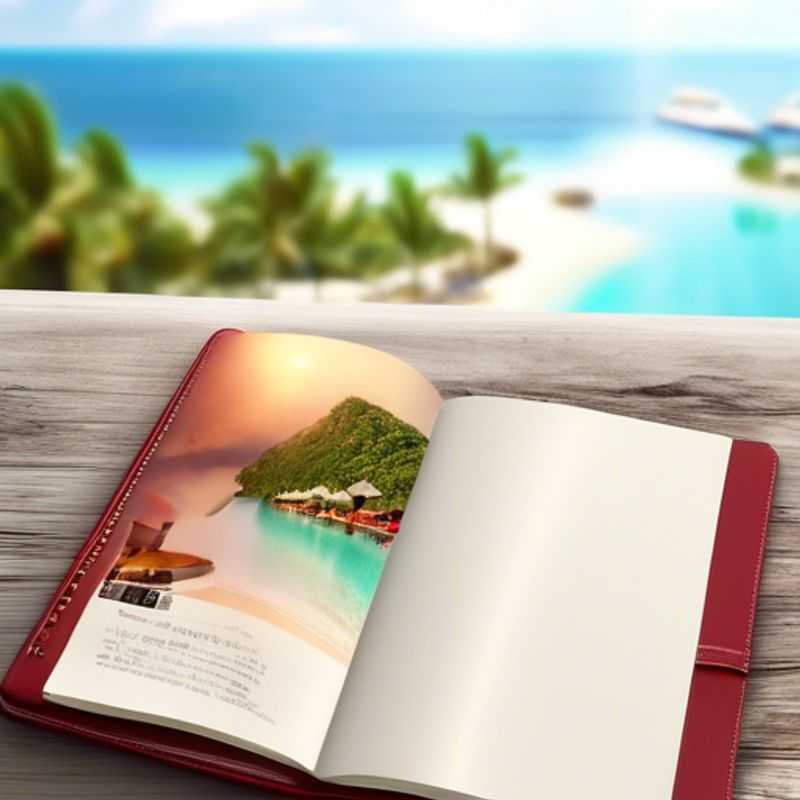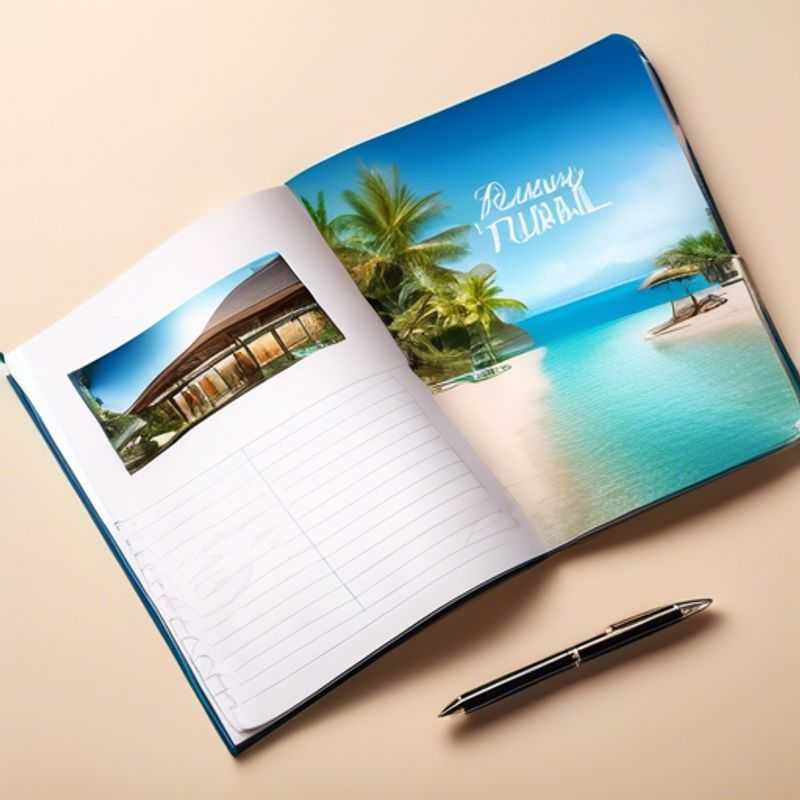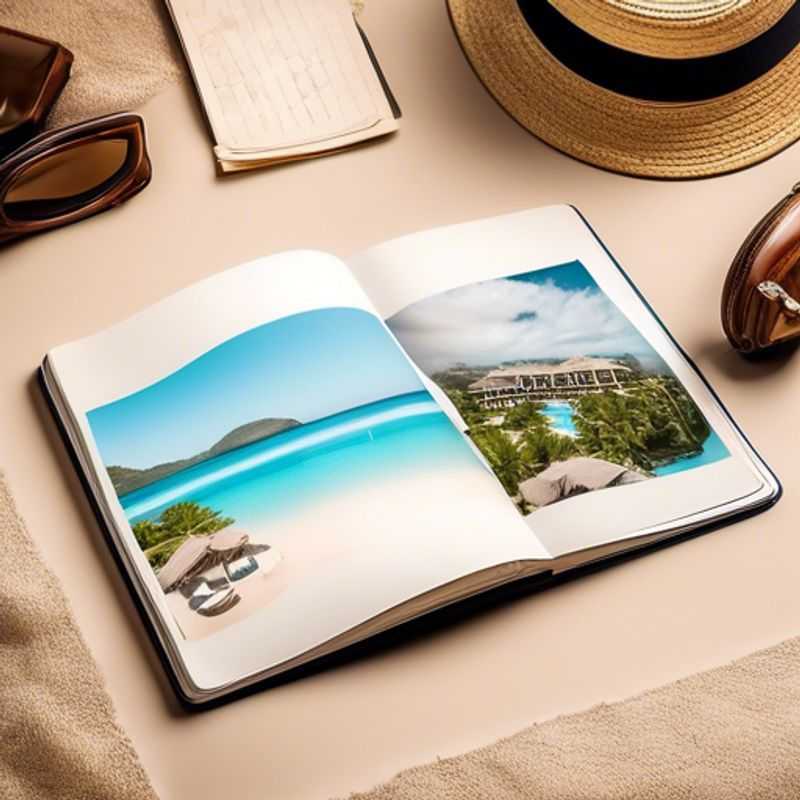4 Key Considerations When Choosing a Luxury Travel Journal or Notebook

Size and Portability: A Travel Journal That Fits Your Adventures
Quality Materials & Craftsmanship: A Lasting Legacy of Your Journeys
Functionality & Features: Making Notes & Memories Easy
Style & Design: Expressing Your Unique Travel Persona
Embarking on a luxury travel journey demands a special companion – a travel journal or notebook that embodies both elegance and functionality. Choosing the right one is crucial, as it will become your trusted confidant, capturing memories and insights that will last a lifetime. Here are four key considerations to guide your selection:
1. Size and Portability: Consider the destinations you’ll be visiting. A compact journal is ideal for exploring bustling cities and navigating crowded streets, while a larger notebook might be more suitable for leisurely journeys with ample space to write. Think about the weight and size of the journal, ensuring it’s comfortable to carry and doesn’t become a burden.
2. Quality Materials and Craftsmanship: Luxury travel notebooks should be crafted from durable, high-quality materials. Look for journals bound in leather, handcrafted paper, or even ethically sourced materials. The feel of the materials and the meticulous craftsmanship will enhance your writing experience and create a treasured keepsake.
3. Functionality: Beyond aesthetics, consider the practical aspects. Page layouts, whether lined, blank, or gridded, should suit your writing style. Explore different closure mechanisms – ribbons, clasps, or elastic bands – to find the most secure and convenient option. Some journals even feature pockets for storing mementos, adding to their functionality.
4. Personal Style and Preferences:
- Consider the size and portability of the travel journal or notebook. Look for a compact and lightweight option that can easily fit in your luggage or bag, allowing you to jot down notes and sketches on the go.
- Look for high-quality materials and craftsmanship. Opt for a travel journal or notebook made with durable, long-lasting materials like leather, canvas, or high-quality paper that will withstand the rigors of travel.
- Evaluate the functionality, such as page layout and closure options. Consider features like perforated pages, pockets for storing mementos, and secure closures to keep your writings and keepsakes protected.
- Choose a design that reflects your personal style and travel preferences. Select a travel journal or notebook with a look and feel that you'll enjoy using, whether it's a classic leather-bound journal or a vibrant, artfully designed notebook.

Packing Light: Choosing the Right Size and Portability for Your Travel Journal
When choosing a travel journal or notebook, the size and portability are crucial. A bulky journal can be cumbersome and inconvenient, especially when traveling, and you might not carry it around. A compact notebook, on the other hand, is easier to pack, carry around, and use on the go, making it more likely to be used consistently for jotting down your travel experiences.
Consider the size and weight of the notebook. A small, lightweight notebook will be easier to pack and carry, but it may not have enough space for lengthy entries. A larger, heavier notebook will offer more space, but it may be less practical for daily use.
Think about the format of the notebook. A bound notebook with sewn pages is more durable and can withstand frequent use. A spiral-bound notebook is less expensive and allows for easy page-turning, but it might be less durable.
Don't overlook the paper quality. Smooth, high-quality paper will prevent ink from bleeding through, which is essential for travel journaling, as you might be using fountain pens or other inks.
Ultimately, the best size and portability for your travel journal or notebook will depend on your individual needs and preferences.

Beyond the Price Tag: Choosing Quality Craftsmanship and Materials
Investing in high-quality materials and craftsmanship is a smart move for any shopper, especially when it comes to durable goods like clothing, furniture, and home appliances. It may seem like a splurge upfront, but these items will last longer, requiring fewer replacements and saving you money in the long run.
Quality craftsmanship often involves skilled artisans using traditional techniques, which can add to the uniqueness and value of the product. This commitment to quality often translates into a product that's built to last, with intricate details and robust construction that stand the test of time.
Beyond longevity, high-quality materials can also be more environmentally friendly. Sustainable practices in sourcing and production are increasingly important, with many brands prioritizing ethical sourcing and minimizing their environmental impact. Look for certifications like Fair Trade or certifications that guarantee sustainable sourcing of materials.
While quality often comes with a higher price tag, it's important to consider the value proposition. By investing in durable, well-made items, you're not just buying a product, you're investing in an experience that lasts. These pieces can become cherished heirlooms passed down through generations, holding sentimental value and adding character to your home and life.
Ultimately, the decision of whether to prioritize quality craftsmanship comes down to your individual needs and values. But if you're looking for a product that's not only functional but also beautiful, durable, and ethically sourced, investing in high-quality materials and craftsmanship can be a wise choice.

Functionality Check: Page Layout &Closure Options
Evaluating the functionality of a webpage can be a valuable exercise, especially when you want to understand how it functions for both users and developers. This involves looking at two key aspects: page layout and closure options.
Page layout refers to how elements are arranged on the page. Is the layout visually appealing and intuitive? Can users easily find the information they need? Does the website adapt well to different screen sizes? These questions are crucial for usability.
Closure options refer to how the page ends and how users can exit. Do clear and accessible "back" buttons exist? Are there other ways to navigate away from the page (such as a "close" button)? Well-defined closure options ensure a smooth user experience and prevent frustration.
To evaluate functionality, you can utilize a range of tools and techniques:
1. Manual testing: This involves directly using the website as a regular user would. Navigate through different sections, try out various features, and note any issues you encounter.
2. Automated testing: Software tools can automate the testing process, running specific tests to check for broken links, page load times, and other performance issues. These tools can provide valuable data, but manual testing is still essential.
3. User feedback: Collecting feedback from actual users can provide valuable insights into how well the website functions. Use surveys, usability testing, or simply ask for user input to gather opinions and identify areas for improvement.
Remember, a functional website should be both user-friendly and technically sound. Evaluating these aspects can help you create a better experience for your users.

Design Your Trip: Choosing a Style that Fits Your Travel Soul
Choosing a travel backpack that reflects your personal style and travel preferences is a crucial step in ensuring a comfortable and enjoyable journey. Consider your usual travel style - are you a minimalist packer or do you prefer to bring everything but the kitchen sink? Think about the climate you'll be traveling in, and the types of activities you'll be doing. A backpack's size and features will vary depending on your needs. A lightweight and durable backpack with ample compartments and pockets is a good choice for most travelers, especially if you're on a long journey.
If you're a frequent traveler, you might want to invest in a high-quality backpack from a reputable brand like Osprey, Gregory, or Deuter. These backpacks often come with a lifetime warranty and have been tested to withstand the rigors of travel. However, it's worth considering more affordable options if you're only planning to travel once or twice. Remember to check reviews and compare prices before making your purchase.
Once you've chosen your backpack, it's important to pack it efficiently to maximize space and ensure a comfortable carrying experience. Pack heavy items like shoes and toiletries at the bottom, and lighter items like clothes and electronics at the top. Use packing cubes to compress your belongings and keep everything organized. Remember to distribute the weight evenly throughout your pack to prevent back pain or discomfort.
By following these tips, you can choose a backpack that meets your needs and enhance your overall travel experience. Don't forget to personalize your backpack with a few travel essentials like a travel pillow, a water bottle, and a small first-aid kit. Happy travels!
